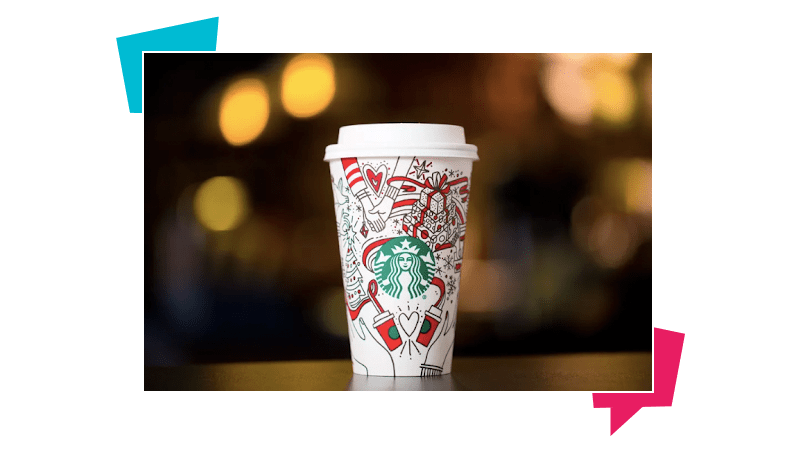How to Get Christmas Marketing Right and Win Customers Over
The holiday season will soon be upon us, and the festive mood is already filling up the air. You probably know the marketing industry has fully embraced Christmas, although for reasons little to do with religious beliefs.
It aims to take advantage of the momentum swing in shopping habits, which stretches on to the New Year and beyond. Indeed, promotional opportunities abound, be it for fashion apparel or general consumer items. Numerous gift hunters scour the streets and online hubs looking for cool ideas and products. So, it comes as no surprise the preparations are underway across industry sectors. But there’s one problem. Overlooking the nature of the holiday can lead companies to extremes and dead ends.
In recent years, we’ve seen it all: the good, the bad, and the ugly. Some brands have launched campaigns that brought way more harm than good. This suggests Christmas marketing is much more than some routine window-dressing. It must suit your brand, target audience, and digital strategy. What is more, it should blend tradition with current cultural trends and holiday mood.
Here is what to avoid and what to do in order to arrest the attention of your audience.
With Flying Colors
Christmas, just like other major events in the holiday season, has an immense marketing potential we can all tap into.
But, there are ways to do it right and ways to mess things up. You cannot just add glitter and red tones to your marketing collateral, as some sort of cosmetic correction. The good news is we can draw lessons from brands killing it with their Christmas campaigns. So, let’s dive in. In 2017, bookseller Waterstones crafted an illustrated gift guide. It was pleasing to the eye and full of useful tips and ideas for gifts, including Secret Santa ones. We would argue this example shows us how to capitalize on a shopping frenzy in an organic fashion— by adding value to people’s lives.
On the other hand, John Lewis decided to set up a micro-site for people to play around with. It enabled children to create their own versions of the adorable fluffy monster Moz and take selfies with it. This Christmas campaign brought brimming fun and excitement to marketing and enhanced the brand’s online presence too. TikTok did something similar with its promotional activities in the UK. It encouraged customers to produce their own short videos on smartphones. A stream of user-generated content followed, and the audience couldn’t get enough of hashtags and challenges.
TikTok marketers could sit back and observe their efforts yielding impressive results. The campaign beautifully demonstrates the power of directly engaging people.
Major Pitfalls to Avoid
On the opposite end of the spectrum, we have examples of campaigns that fell flat. They are cautionary tales that remind us how Christmas marketing can be a real hit-and-miss. In the past, we’ve witnessed ads promoting cigarettes, rifles, and tomahawks as Christmas gifts. These are obvious disasters, but we should also underline some less-glaring mistakes. Asda’s Christmas Campaign 2016 reveals dire risks of going overboard with sale pitches. Namely, the brand focused too much on its products. Ads were quite forgettable and were snowed under a bunch of more compelling campaigns.
Moving on, we have the House of Frasier, which attempted to put an interesting twist on a traditional Christmas mix. TV ads and videos came across as trendy and cool, but social media campaign posts didn’t. They were too creepy and weird for the audience, which usually yearns for something heartwarming during holidays.
This dissonance signals poor strategic planning and stirs brand confusion.
Let’s, at this point, also mention Marks & Spencer’s Alice in Wonderland campaign. The company threw big money at the sumptuous video featuring celebrities. It was nicely put together, but relied too much on star power and lacked authenticity. Thus, it failed to engage people and impact their Christmas habits. This isn’t to say one should stay away from celebrities. John Lewis did a bit better and gain some traction with its Elton John biographic mini-film (The Boy and the Piano). This just goes to show how the right marketing approach and ample substance make all the difference.
The Importance of Contextual Knowledge
To hit a home run, you need to do your homework and research the market. Modern business has gone global, but we still require a deeper understanding of specific cultural and societal contexts. Religious practices and tenets vary wildly from place to place.
And of course, Christmas isn’t the only holiday with deep roots in religion nor does everyone celebrate it. For instance, one must not oversell leisure, food, and entertainment to Muslims during their periods of fasting. This kind of misstep undermines consumer trust and can even cause an outrage. At other times, you face people with different ideas of what celebrating Christmas or New Year means.
Here, we would like to mention Budweiser as an illustration of how things are changing in marketing. The company smartly revamped its old marketing approach and started promoting alcohol-free drinks. It also warned against driving under the influence of alcohol. These campaigns cater to people who would rather stay sober than going carousing with friends. Furthermore, notice how Starbucks has found itself on a slippery slope multiple times before. In 2015, its holiday-themed red cups ignited controversy. Some people argued they weren’t religious enough.

Source: https://www.eater.com/
The next year, red cups became green and featured an illustration of unity between diverse groups of people. This time around, the design didn’t fly too well with political conservatives, who tend to be very vocal during religious holidays.

Source: https://www.eater.com/
Finally, in 2017, the red cup was back, but with a different visual identity. It showcased Christmas staple motifs, such as presents and snowflakes. Even this supposedly surefire solution was criticized, but the dust has settled for the most part.

Source: https://www.eater.com/
What is the takeaway?
Well, sometimes, you have to be very careful not to offend and alienate segments of the audience. Yes, this suggests playing it safe can pay off more often than not. Controversy may give you the media spotlight, but also tarnish your brand.
Planning an Execution Steps to Follow
Planning ahead of time holds the key to success. Christmas campaigns should be an integral part of the overall digital marketing strategy and digital communication plan. This is a way to achieve a high level of strategic alignment and message consistency.
Next off, you want to establish your marketing budget and schedule. Make sure you are able to fuel your campaigns without breaking the bank. Among other things, we would implore you to dedicate resources to sprucing up your visual identity and optimizing online presence. To get the most bang for your buck, set up clear, measurable, and realistic marketing goals. See if you want to drive traffic, maximize sales, spur engagement, or something else. You can target multiple objectives at once, provided your Christmas budget allows it. Under the same condition, feel free to extent you activities all the way to the New Year. The amount of necessary overwork is minimum, considering the similarities between the two holidays.
It’s also advisable to analyze what worked in the past and what didn’t. And once the campaigns commence, put tools such as Google Analytics to good use. They help you evaluate your performance and fine-tune marketing approach if need be. Remember, the ultimate trick is to capture the imagination and evoke positive emotions. These two things allow you to move people to action and influence their behavior. You can hardly go wrong with feel-good stories emphasizing the importance of camaraderie, fun, and joy.
So, if you want to get someone to spend, don’t go all-in with self-promotion and rave about your great products. You’re probably better off appealing to the tradition of gifting and offering people cool ideas. Even better, give them a chance to transcend the distance between each other. This is precisely what Royal Dutch Airlines did with the airport Bonding Buffet.
And in case you do want to push products, try to create a sense of exclusivity and urgency. Promote special and limited-time offers, as well as gift packs and bundles. Vouchers, free shipping, gift cards, and certificates do the trick as well.
Finally, stay abreast of emerging and current trends without downright imitating others. Be as original and authentic as you can. Master the art of storytelling and emit messages bound to resonate with shoppers.
Capture the Moments of Magic
Holidays like Christmas and New Year are both a big challenge and an opportunity. You need to play your cards well and avoid marketing fiascos that have ruined countless campaigns. The first thing to do is come up with a smart digital strategy and well-thought-out campaign plans. Know who you’re talking to and what you want to accomplish.
Strive to balance tradition with the wants and needs of modern-day life. Steer away from issues that divide people and promote love and unity. Stand by values and holiday themes, not some petty materialistic obsession.While at it, explore avenues that invite the audience to join in, such as user-generated content. Build meaningful connections and create everlasting memories. Doing this should let you stand out amidst all the marketing noise out there.
It’s time to get down to business in the best Christmas Spirit and maximize marketing ROI.
Let’s get into the holiday spirit together!



